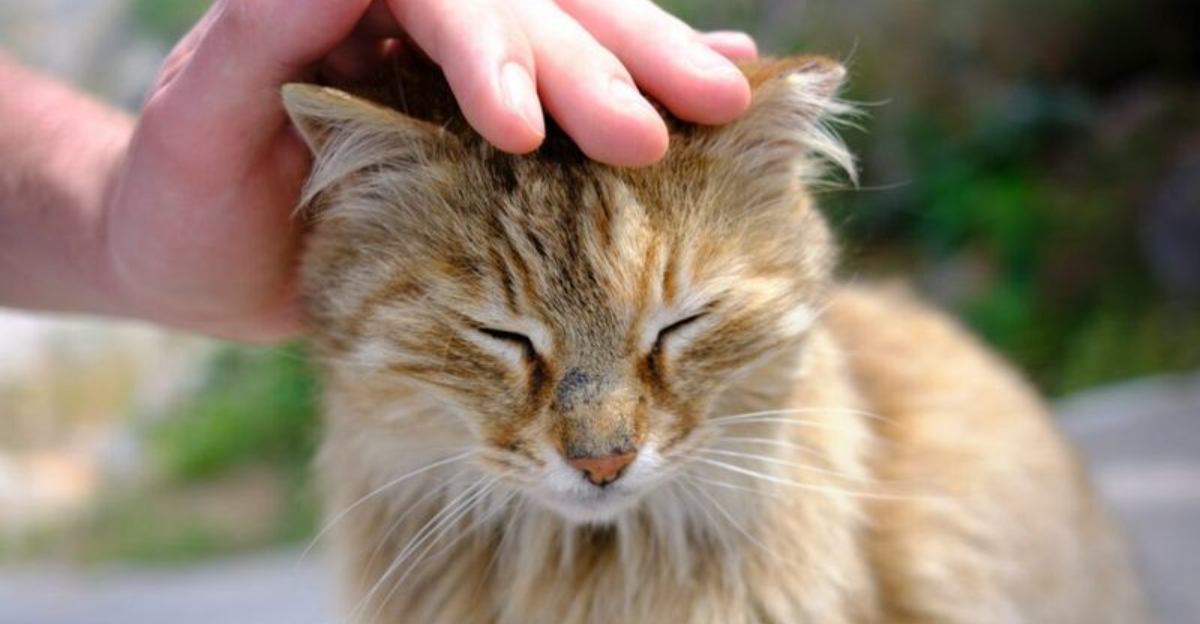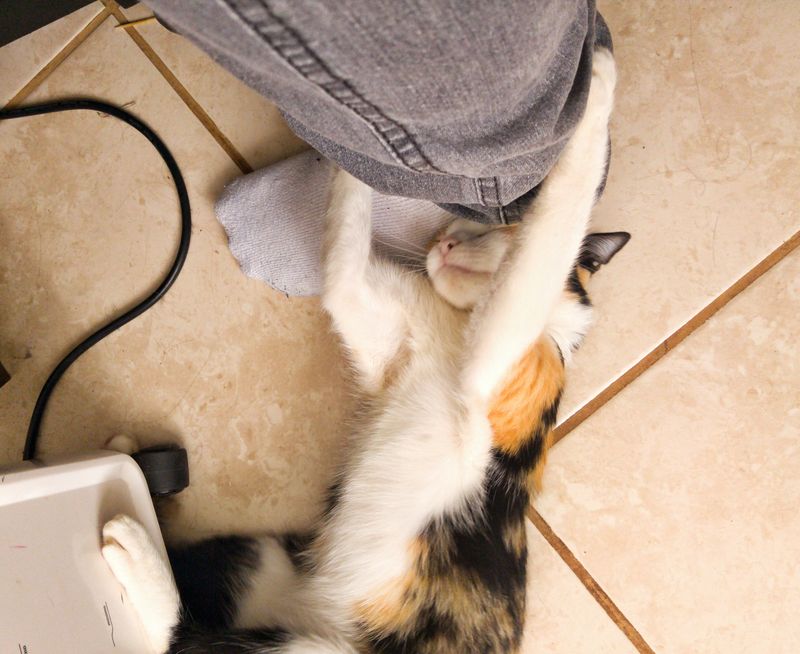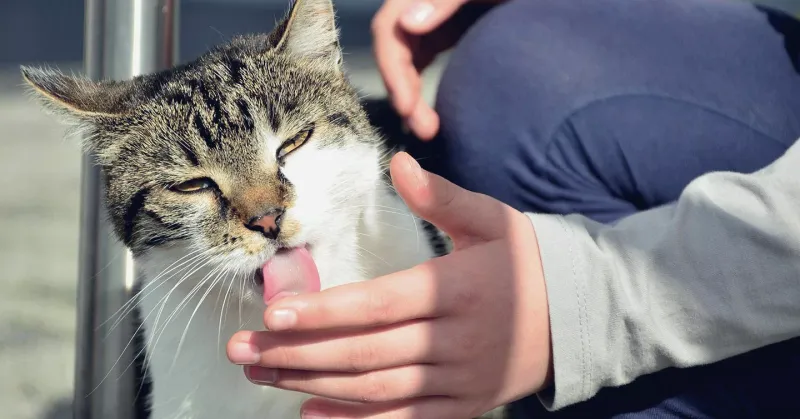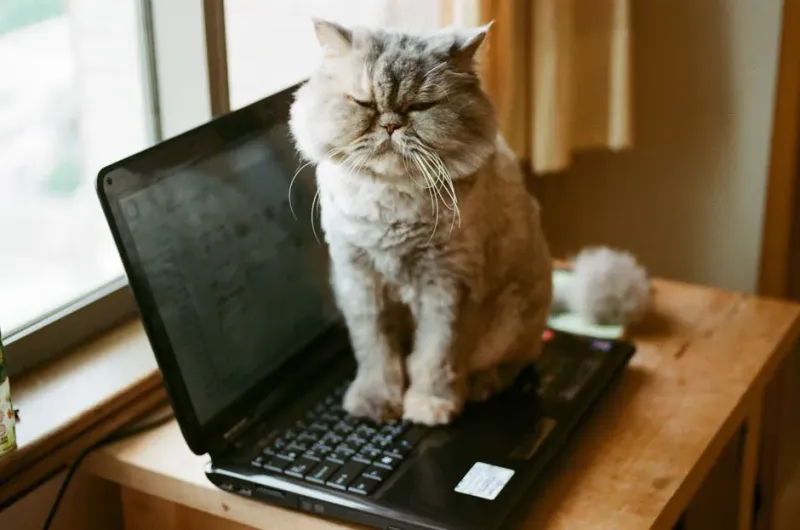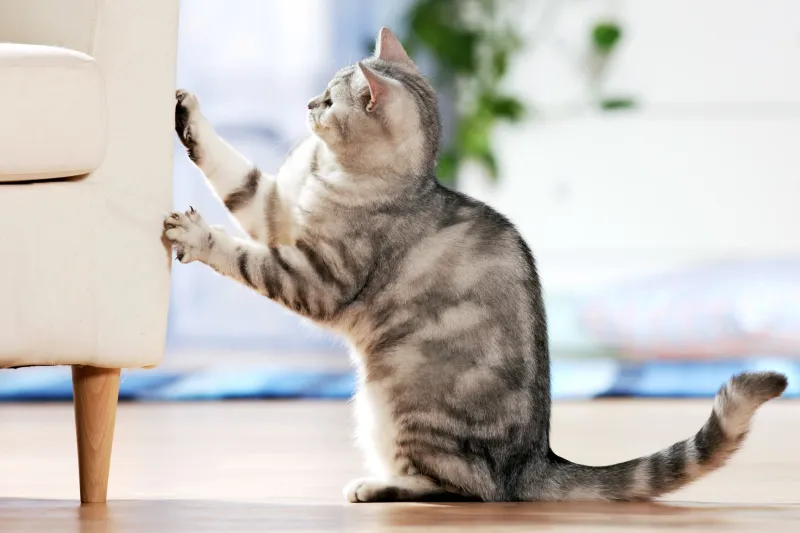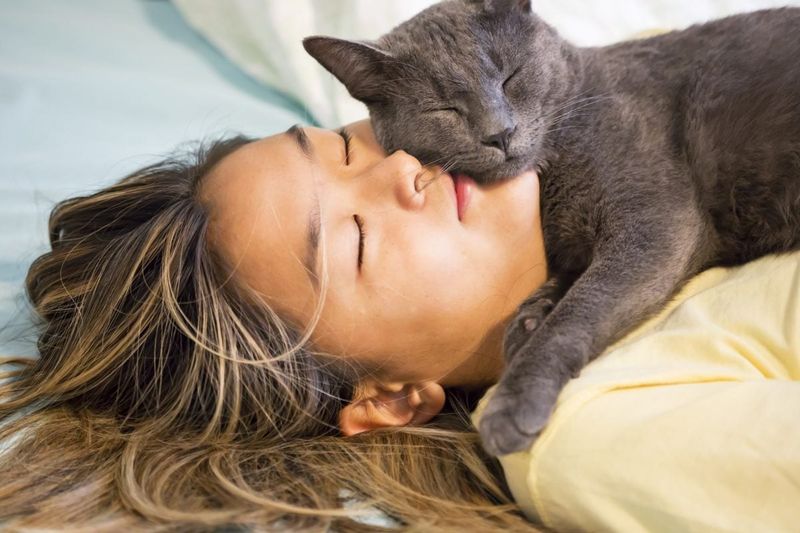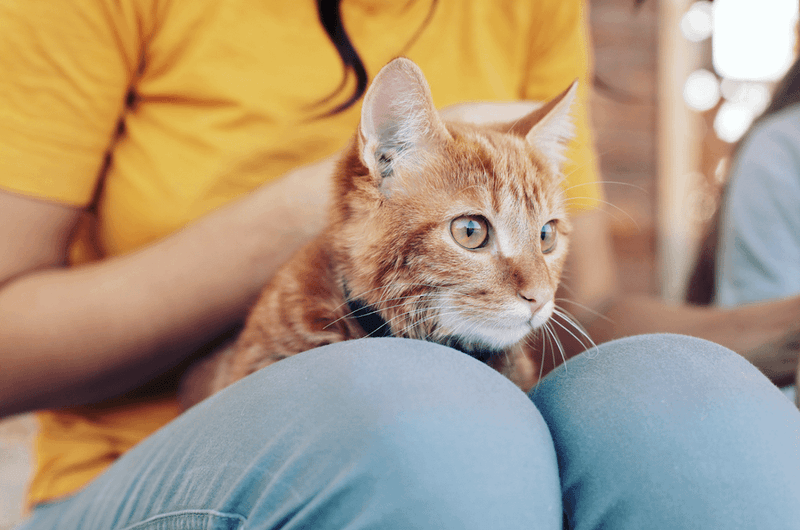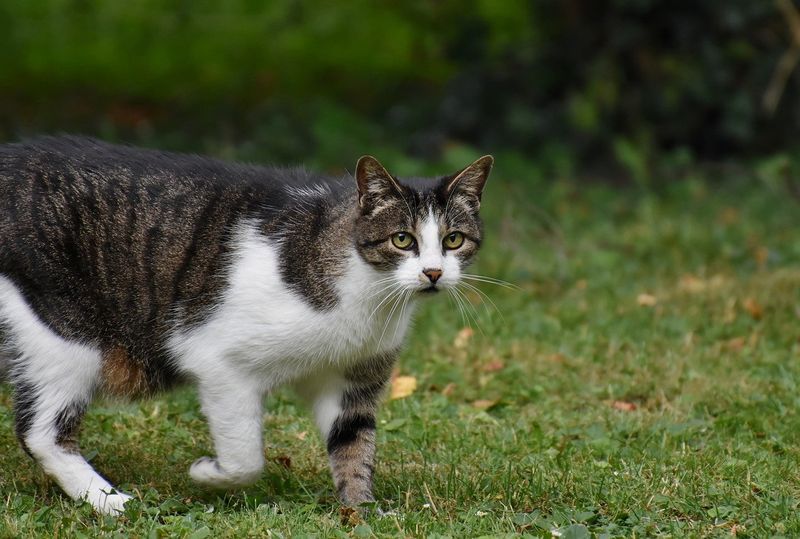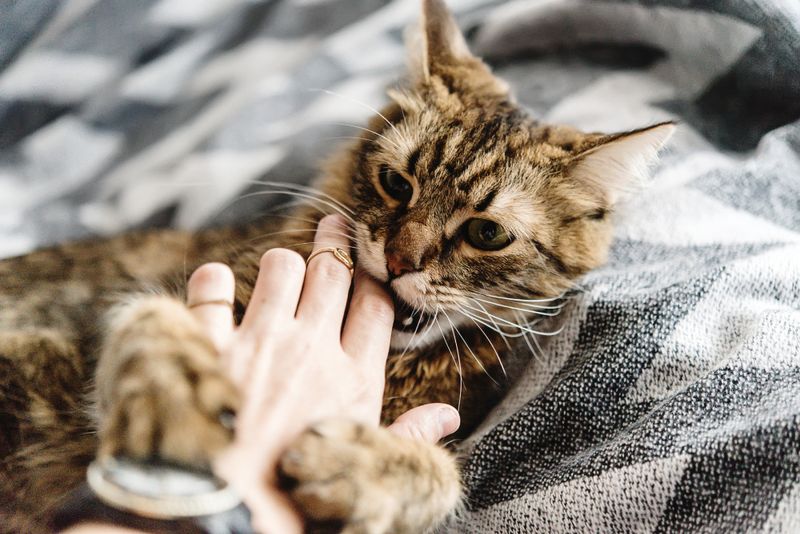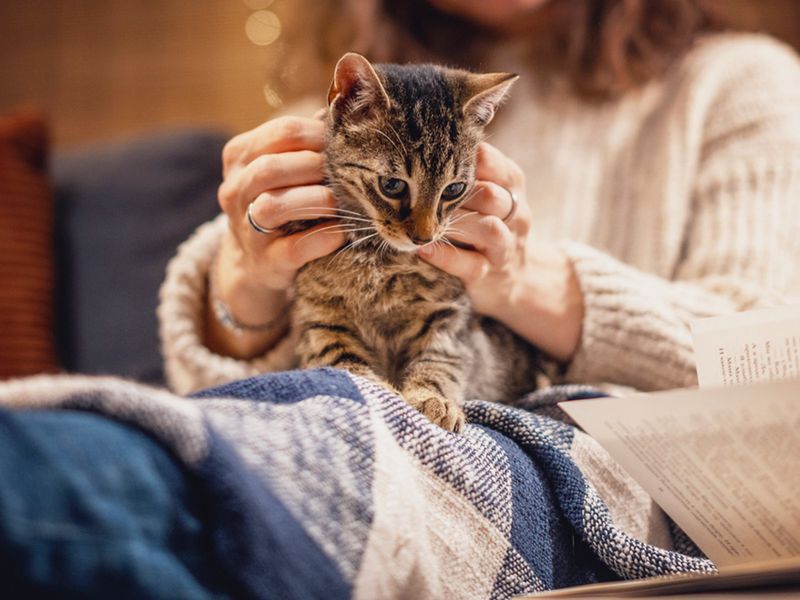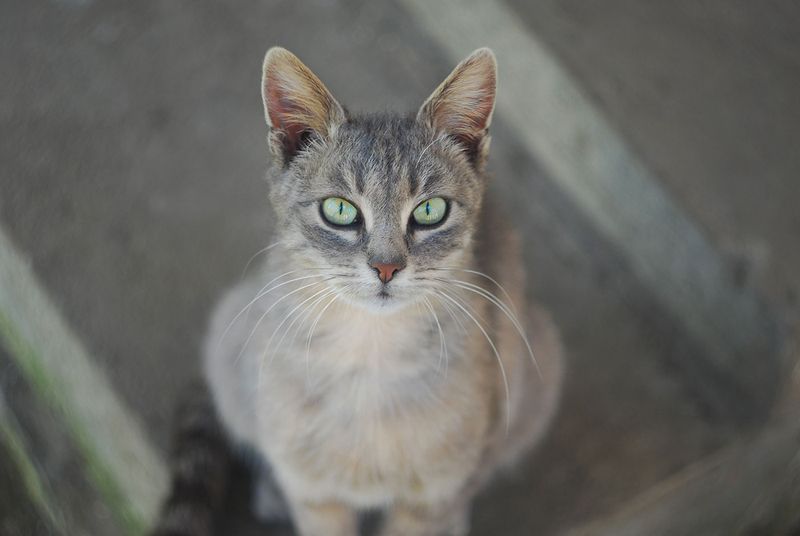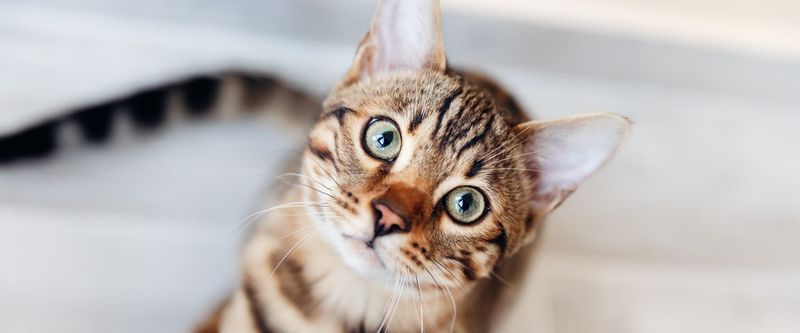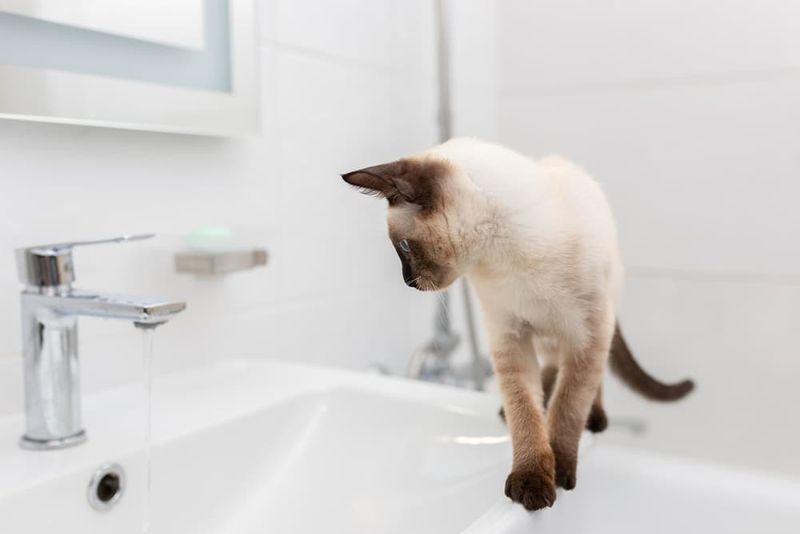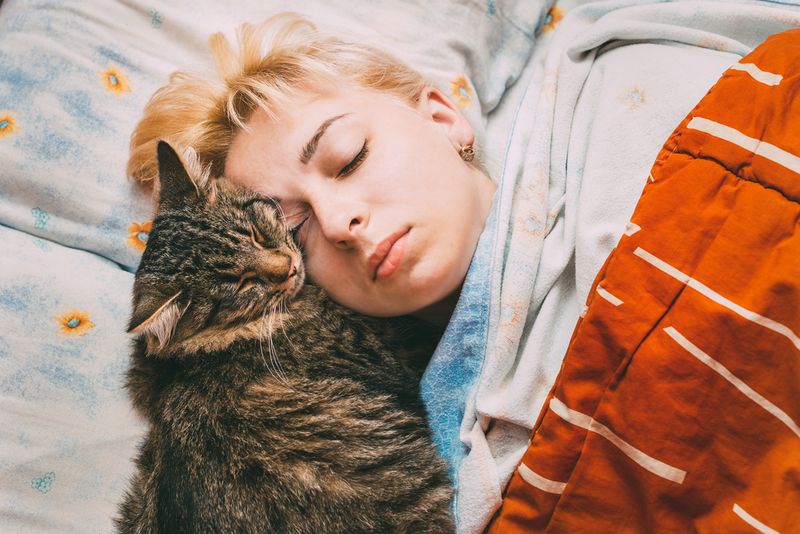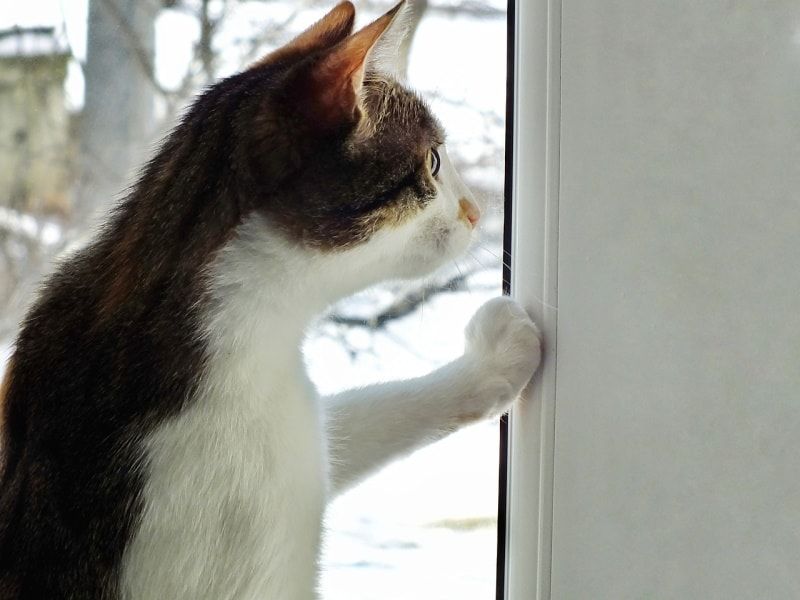📖 Table of Content:
- 1. Excessive Meowing Throughout The Day
- 2. Following You From Room To Room
- 3. Knocking Items Off Shelves
- 4. Increased Grooming Of Owners
- 5. Sitting On Your Belongings
- 6. Increased Scratching Of Furniture
- 7. Pawing At Your Face While You Sleep
- 8. Excessive Shedding And Overgrooming
- 9. Claiming Your Lap At Unusual Times
- 10. Bringing You “Gifts”
- 11. Unusually Aggressive Play
- 12. Increased Nighttime Activity
- 13. Unusual Hiding Behavior
- 14. Excessive Kneading Or “Making Biscuits”
- 15. Excessive Vocalization At Food Time
- 16. Staring At You Intensely
- 17. Excessive Drooling During Petting
- 18. Sudden Interest In Your Bathroom Activities
- 19. Sleeping On Your Head Or Face
- 20. Increased Demand For Door Opening Services
Cats are often seen as independent creatures, but they thrive on meaningful connections. Beneath their calm exterior, many crave affection and interaction. Ignoring this need can lead to changes in behavior and mood.
Felines may express emotional needs in ways that aren’t always obvious. Subtle shifts in routine or temperament can signal a longing for more attention. Some signs are easy to miss unless closely observed.
Understanding these cues is key to maintaining a strong human-cat bond. Responding appropriately can enhance trust and emotional well-being. A cat that feels seen and valued is more likely to remain content and emotionally balanced.
1. Excessive Meowing Throughout The Day
Vocal cats often use their voice to communicate their needs. When your furry friend suddenly becomes more talkative than usual, they might be trying to tell you something important.
Cats typically meow to get attention, express hunger, or indicate discomfort. If your normally quiet cat starts a symphony of meows whenever you’re around, they’re likely seeking interaction.
Try setting aside dedicated playtime when this happens rather than just filling the food bowl. Your cat may just want your undivided attention for a while.
2. Following You From Room To Room
Your feline shadow won’t let you out of their sight. Every step you take, they’re right behind you – bathroom visits included! This behavior indicates your cat values your presence tremendously.
Contrary to the stereotype of aloof cats, many felines form strong attachments to their humans. When they trail you throughout the house, they’re essentially saying, “Hey, I want to be part of whatever you’re doing.”
Rather than finding it annoying, recognize this as a sign of affection and trust. Your cat simply enjoys your company.
3. Knocking Items Off Shelves
The glass figurine you cherished? Now on the floor. Your carefully arranged books? Scattered everywhere. This seemingly mischievous behavior isn’t your cat being destructive on purpose.
Cats often knock things over when they’re bored and seeking interaction. They’ve learned that when objects crash to the floor, humans come running! It’s an effective (if annoying) strategy to get your immediate attention.
To address this behavior, increase daily play sessions with interactive toys. Mental stimulation and physical activity will reduce your cat’s need to create their own entertainment at your decor’s expense.
4. Increased Grooming Of Owners
Your cat’s sandpaper tongue on your hand or face might seem strange, but it’s actually a compliment! Cats groom those they consider family, and increased licking can signal a desire for more bonding time.
This behavior, called allogrooming, is how cats strengthen social bonds in the wild. When your kitty starts giving you more tongue baths than usual, they’re trying to reinforce your connection.
While the rough texture might not feel pleasant, appreciate the sentiment behind it. Your cat is treating you as they would a beloved littermate or their own kitten.
5. Sitting On Your Belongings
Found your cat lounging on your laptop again? Or perhaps they’ve claimed your freshly folded laundry as their new bed? This isn’t just about finding comfortable spots.
Cats are attracted to items that carry your scent. By sitting on your belongings, they’re mixing their scent with yours – a feline version of connection. They also know these items are important to you, so sitting on them guarantees your attention.
Try providing a cat bed near your workspace or a dedicated blanket with your scent on it. This gives them the connection they crave while preserving your belongings.
6. Increased Scratching Of Furniture
Your once-pristine couch now bears the battle scars of sharp claws. Sudden increases in scratching behavior often signal your cat needs more engagement, not just a scratching post upgrade.
Scratching serves multiple purposes for cats – it marks territory, stretches muscles, and relieves stress. When cats feel neglected, they may scratch more frequently or in more visible areas to get your reaction.
Address this by providing appropriate scratching surfaces and, more importantly, interactive play sessions. Physical activity helps cats release energy that might otherwise be directed at your furniture.
7. Pawing At Your Face While You Sleep
The gentle (or not-so-gentle) tap of paws on your cheeks at 3 AM isn’t your cat’s way of checking if you’re alive. Those midnight wake-up calls typically indicate your furry friend is craving more daytime interaction.
Cats are crepuscular, meaning they’re naturally more active at dawn and dusk. However, if they’re not getting enough stimulation during your waking hours, they’ll adjust their schedule to whenever you’re available – even if that’s during your precious sleep time.
Try an evening play session to tire them out and fulfill their attention needs before bedtime.
8. Excessive Shedding And Overgrooming
Finding more fur tumbleweeds than usual around your home? When cats feel stressed or neglected, they often respond with excessive grooming, leading to increased shedding and even bald patches.
Cats typically groom to self-soothe when anxious. Without adequate attention and enrichment, this natural behavior can become compulsive. The resulting fur loss isn’t just a housekeeping issue – it signals your cat’s emotional state.
Regular brushing sessions provide not only physical grooming help but also valuable bonding time. The gentle touch and focused attention can significantly reduce stress-related grooming behaviors.
9. Claiming Your Lap At Unusual Times
Your typically independent cat suddenly becomes a lap magnet during important Zoom calls or when you’re trying to eat dinner. This timing isn’t coincidental – it’s strategic!
Cats observe our routines closely. When they notice we’re focused on something else, they often choose those moments to seek attention. The urgent need to sit on you while you’re busy is their way of saying, “Remember me? I’m more important than that screen.”
Creating regular dedicated cat time throughout your day can help reduce these inconveniently timed demands for attention.
10. Bringing You “Gifts”
Finding toy mice in your shoes or, worse, actual deceased creatures on your doorstep? Your cat isn’t just showing off their hunting prowess – they’re trying to engage with you through natural behaviors.
In feline social structures, bringing prey items is both teaching and sharing. When your cat delivers these “presents,” they’re attempting to participate in group activities with you, their family member.
Acknowledge their efforts (without reinforcing unwanted hunting) and redirect this energy toward interactive play with appropriate toys. Your cat wants to share activities with you, not just exist in the same space.
11. Unusually Aggressive Play
Those surprise ankle attacks or rougher-than-normal play sessions might leave you wondering what’s gotten into your usually gentle cat. Sudden increases in play aggression often indicate pent-up energy and a need for more structured interaction.
Cats require both physical exercise and mental stimulation. Without regular play opportunities, that natural hunting energy builds up and can manifest as seemingly aggressive behavior toward you or other pets.
Implementing daily play sessions with wand toys or laser pointers can help channel this energy appropriately. Your cat isn’t being mean – they’re just desperate for engagement.
12. Increased Nighttime Activity
The 2 AM zoomies around your bedroom might seem like your cat’s attempt to drive you crazy. These midnight marathons often indicate your feline friend isn’t getting enough stimulation during your waking hours.
Without adequate daytime play and attention, cats will naturally become more active when you’re trying to sleep. Their internal clocks are flexible, and they’ll adjust their activity periods to whenever they can get interaction.
Creating an enriched environment with puzzle feeders and scheduling vigorous play before bedtime can help exhaust energy reserves and promote synchronized sleep schedules.
13. Unusual Hiding Behavior
Your normally social cat has started spending hours under the bed or in closets. Contrary to what you might think, this withdrawal can actually signal a need for more quality attention, not less.
Cats sometimes retreat when they feel their social needs aren’t being met. It’s similar to how humans might become withdrawn when feeling neglected. The hiding isn’t about wanting permanent solitude but rather communicating emotional discomfort.
Gently coax your cat out with treats and interactive toys rather than forcing interaction. Creating positive experiences will gradually rebuild their confidence in seeking attention from you.
14. Excessive Kneading Or “Making Biscuits”
Those rhythmic paw pushes against your lap might be cute, but when kneading becomes more frequent or intense, your cat may be expressing a deeper need for security and attention.
Kneading is a behavior that begins in kittenhood to stimulate milk flow from mother cats. When adult cats knead excessively, they’re often seeking comfort and connection. It’s a self-soothing behavior that increases when cats feel emotionally unsatisfied.
Respond to these moments with gentle pets and verbal reassurance. Your cat is essentially saying, “I need more of the security that comes from our bond.”
15. Excessive Vocalization At Food Time
The chorus of meows that starts well before mealtime and reaches operatic levels as you prepare their food might not just be about hunger. Food-related vocalization often intensifies when cats are seeking more general attention.
Meals represent one of the most reliable interactions cats have with their humans. When other forms of attention are lacking, they may put extra emphasis on these guaranteed encounters. The dramatic performance is less about the food and more about engaging with you.
Try incorporating brief play or petting sessions before meals to address the underlying need for connection.
16. Staring At You Intensely
Those unblinking eyes following your every move across the room aren’t plotting your demise – they’re trying to establish a connection. Prolonged staring is your cat’s attempt at non-verbal communication when they feel disconnected.
Cats use direct eye contact as a form of social interaction. The slow blink (sometimes called a “cat kiss”) is a sign of trust and affection. If your cat is staring more frequently without blinking, they may be trying to initiate more meaningful exchanges.
Try responding with slow blinks of your own and see if your cat approaches for interaction. This simple gesture acknowledges their attempt to connect.
17. Excessive Drooling During Petting
Suddenly your shirt is soaked after a brief petting session! While some drooling during affection is normal for certain cats, a noticeable increase can indicate your cat is savoring rare moments of attention.
Drooling during petting is connected to feelings of contentment and security. Cats who are experiencing a deficit in regular affection may respond more intensely when they finally receive it. The physical response reflects their emotional state.
If your formerly dry cat is now leaving wet spots during cuddle time, consider whether the frequency of these sessions has decreased recently.
18. Sudden Interest In Your Bathroom Activities
A cat that once gave you privacy may now paw at the bathroom door or insist on being present during every shower. This clingy behavior often surfaces when cats feel they’re not getting enough attention. The bathroom becomes just another chance to be near you.
Bathrooms are one of the few places where humans sit relatively still for predictable periods. Cats learn that these moments represent guaranteed access to their humans without competition from screens or other distractions.
While it might seem invasive, this behavior reveals your cat’s determination to connect with you during any available moment – even the most private ones!
19. Sleeping On Your Head Or Face
Waking up with fur in your mouth and a cat sprawled across your pillow? This nighttime invasion of personal space often indicates your cat is compensating for limited daytime connection.
The head area offers several attractions for attention-seeking cats: your scent is strongest there, your breath creates warmth, and positioning themselves near your face ensures you’ll notice them. It’s a strategic location for maximum impact.
Creating more satisfying interactions during waking hours can reduce this behavior. Your cat is essentially using your unconscious state to get the closeness they crave while you’re awake.
20. Increased Demand For Door Opening Services
Your cat suddenly wants in and out of rooms repeatedly, meowing insistently at closed doors even when they’ve just been on the other side. This door obsession typically indicates boredom and a desire for engagement rather than actual interest in the room’s contents.
The activity of requesting the door opening creates a predictable interaction with you. Your cat has discovered that certain behaviors reliably result in your attention, even if it’s just for a moment.
Try redirecting with interactive toys when this behavior starts. Your cat is likely more interested in the interaction with you than whatever lies beyond the door.
